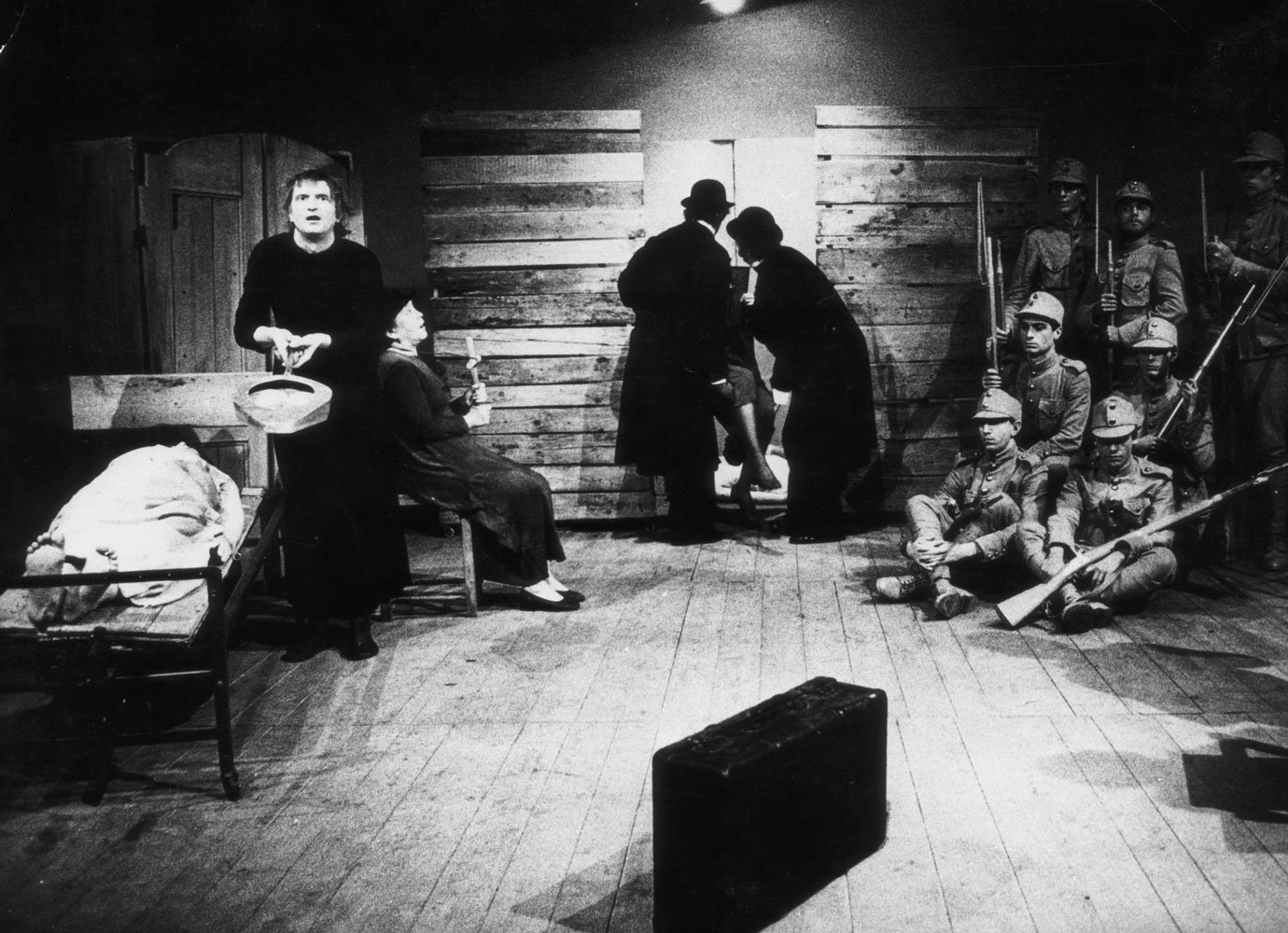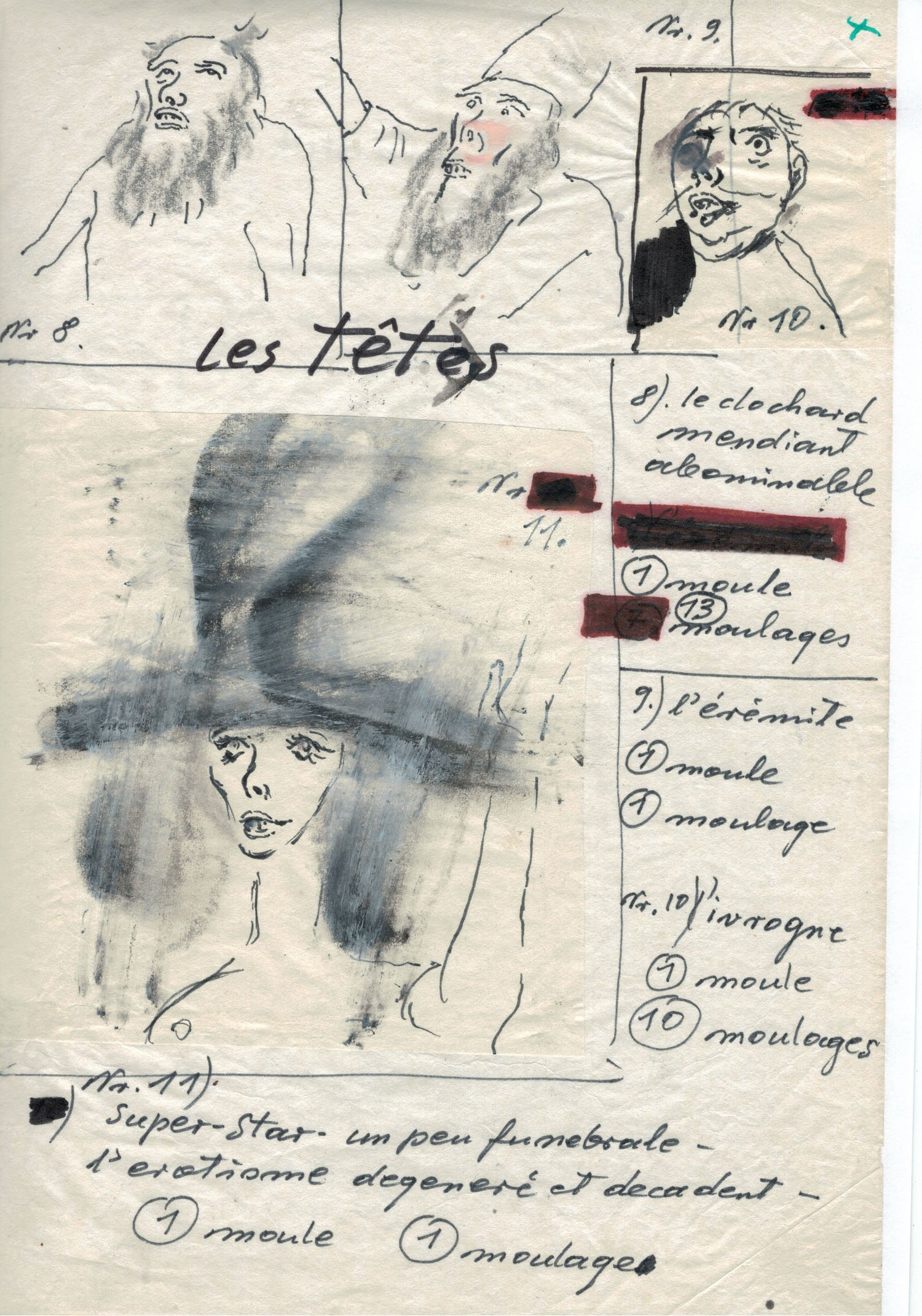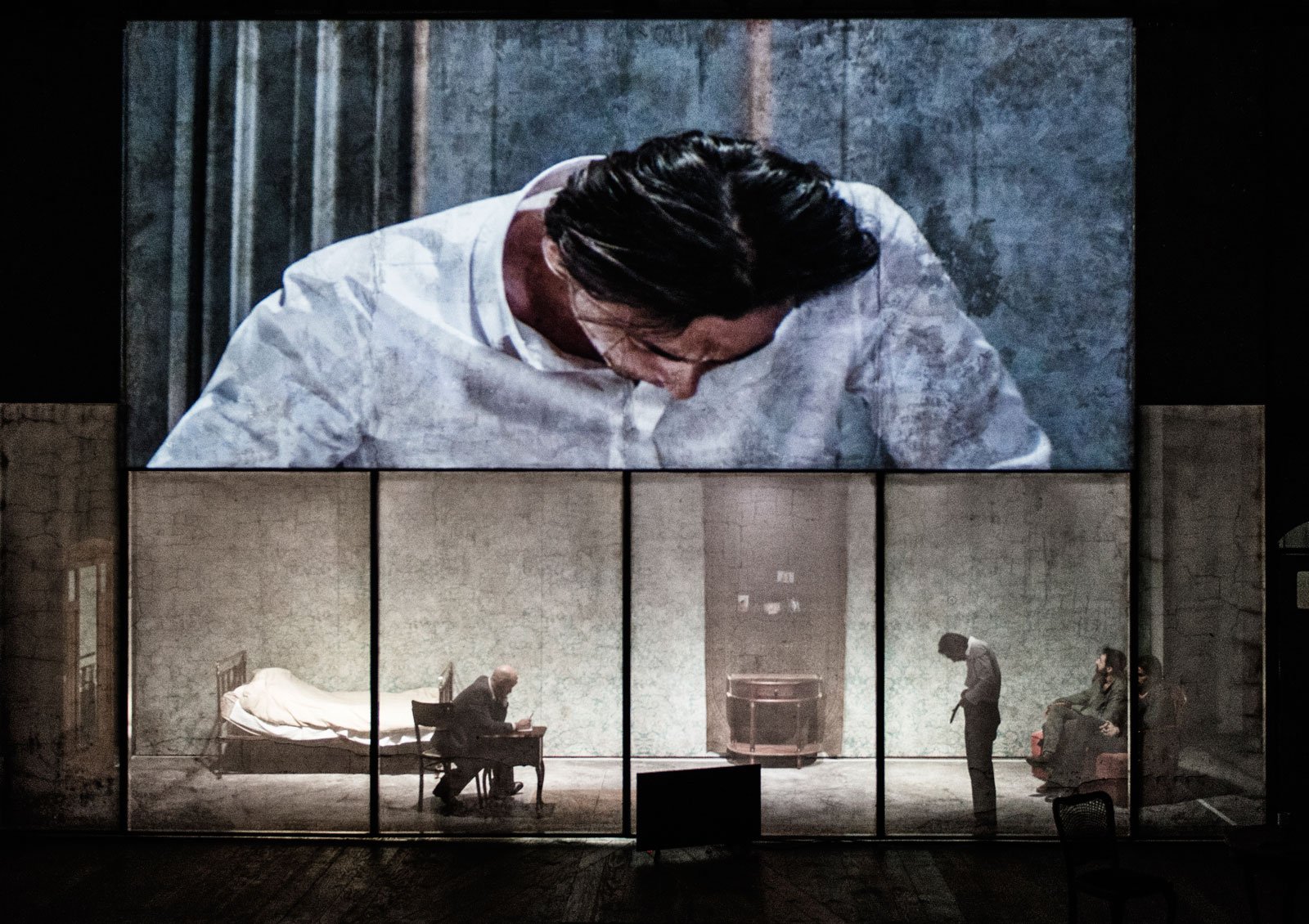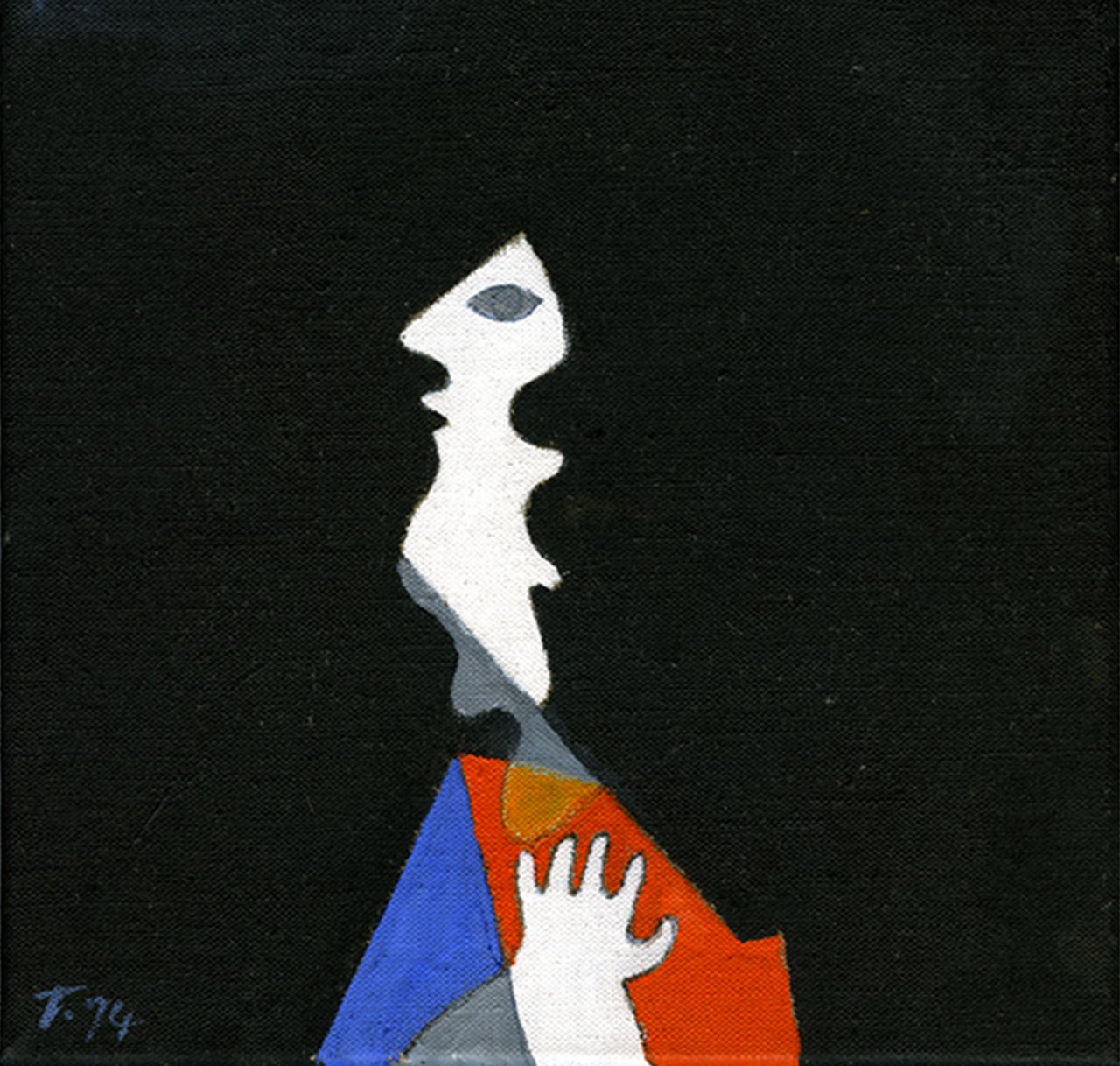Tadeusz Kantor: the Polish art and theatre pioneer who resurrected the dead and brought objects to life

With the launch of Cricoteka’s virtual studio tour, you can now explore the personal space of one of the 20th century’s greatest theatre directors, painters, set designers and all-round artistic innovators.
In an early scene in Tadeusz Kantor’s Wielopole, Wielopole (1980), the audience watches actors playing Kantor’s parents get married. They are pale, ghostlike, and barely able to move or speak. It is a scene that should only exist in a deeply personal nightmare: the implication that the characters recreating their marriage are dead or almost dead makes for extremely uncomfortable viewing. We observe the actor playing Kantor’s father, Marian Kantor, struggle to recite his vows while the actor playing the priest moves the couple’s bodies into position. The eyes of the actress playing Kantor’s mother, Helena Berger, are wide open, tearing up yet unable to blink, as if prescient of the horrors of 20th century Poland. All of this is made all the more distressing due to Kantor’s presence: the theatre director is present, playing himself, watching his dead parents in agony. When he wasn’t playing himself, he would often stand on or just offstage during performances, muttering words or gesticulating at his actors, directing them almost like a conductor in an orchestra.
Tadeusz Kantor in Wielopole, Wielopole (1980). Image: Jerzy Borowski, courtesy of Tadeusz Kantor (c) Maria Stangret, Dorota Krakowska / Tadeusz Kantor Foundation
Over his six-decade-career, Kantor challenged the conventions of theatre at every turn. Born in Wielopole Skrzyńskie in 1915, Kantor studied fine art in Kraków in the 1930s. During World War Two and the German occupation of Poland, Kantor founded a small experimental underground theatre company that performed in Kraków throughout the war. The theatre did not have a permanent space, and most performances took place in secret spaces around the city. This meant the audience and the performers were often close together, in tight quarters, creating a sense of intimacy which Kantor would continue to pursue with Cricot 2, the company he founded in 1955. He and his company went on to tour the world, including performing at the Tate in London, the Pompidou in Paris, and La Mama in New York, among many other locations including recurring art biennials like documenta and Manifesta. While the small spaces for presenting his early theatrical work were born out of necessity, later in his career he continued to challenge the boundary between the actors and the audience, between actors and their props, and between himself as a theatre director and an actor playing himself onstage.
Wielopole, Wielopole performance. Image courtesy of Cricoteka.
Most of Kantor’s plays take inspiration from his own real-life experiences. Wielopole, Wielopole (1980), which is available to watch online, visualises Kantor’s memories of his childhood during World War One along with events from his experience of World War Two. The artist incorporated symbols, songs, and scenes in which the personal merges with the collective, national, and religious into a horrific confrontation with Poland’s violent past and the countless, meaningless sacrifices and deaths. To say that the play is extremely jarring would be an understatement: it includes a graphic scene of sexual assault, a camera that unexpectedly turns into a machine gun, a scene in which actors who are playing soldiers are buried alive with dirt, and the recurring execution of a woman reciting the Kaddish, an ancient Jewish prayer. The symbolism, too, is frightening: at one point, a dead soldier is carried in onto the stage on a cross. In one of the final scenes, Kantor comes on stage and physically arranges his actors into a scene reminiscent of The Last Supper.
Paintings by Tadeusz Kantor from the exhibition Tadeusz Kantor. I Goddamn Falling, Cricoteka, Kraków, (2015-2016). Image: Grzegorz Mart
Kantor’s powerful visual language in staging and symbolism stemmed from the fact that he saw himself as a painter working in theatre; at one point he even called himself a trespasser in the theatrical world. Objects and symbols were incredibly important to Kantor, both in his theatre and paintings. Crucially, he would never refer to the objects he used in theatre as props. He believed they were part of the performance, not just scenography. Instead he referred to them as “bio-objects” — performers in their own right. He was especially interested in what he called “poor objects” — simple everyday items that have the power “to summon up forgotten history and memory.” One example of this is the camera in Wielopole, Wielopole. While it starts off as a prop for an actor playing a photographer who restages a family photograph, it becomes a weapon of murder and destruction that symbolises the violence of 20th-century Poland, during which whole families, communities, towns, and cities were obliterated.
“Dead class” performance. Image courtesy of Cricoteka.
Kantor’s plays often lack a clear linear narrative, instead merging past and present into a visual collage of memory and foreboding. In Dead Class (1975) — which is available, with English subtitles, in a version filmed by the Oscar-winning movie director Andrzej Wajda, on Youtube — dead characters (who we read as victims of war) merge with mannequins to confront their former selves in a classroom that feels like an orchestrated chaos of memory. For Kantor, theatre was not about representing a linear reality, but instead about diving into the very essence of existence and attempting to represent the feeling of memory and trauma.
Though he is most remembered as a maverick of 20th century avant-garde theatre, his creative output also included paintings, drawings, art happenings, writing, and more. He was one of the first artists in Poland to stage “happenings”, or art performances usually staged in public in unexpected locations, such as The Sea Concert (1967) in which he asked the painter Edward Krasinski to stand on a chair in the ocean and “conduct” the waves. Because these happenings were usually staged outside of a theater or gallery, random passersby would often find themselves suddenly part of an audience or even a performance, again breaking down boundaries between who is watching and who is performing.
Chair. Image: studioFILMLOVE, courtesy Tadeusz Kantor (c) Maria Stangret, Dorota Krakowska / Tadeusz Kantor Foundation
Kantor’s paintings also encouraged an intimacy between the artist and the viewer. In his Multipart series (a merging of the words multiplication and participation), he affixed umbrellas to canvases. The viewer could purchase the canvas and was invited to do whatever they wanted on it, whether it be add more paint or affix other objects, as if collaborating with Kantor. In later works, the artist merged sculpture with painting, for example affixing sculpted limbs to bodies he painted on canvases.
Tadeusz Kantor, Multipart with Marii Stangret intervention (1970). Courtesy of Tadeusz Kantor (c) Maria Stangret, Dorota Krakowska / Tadeusz Kantor Foundation
Kantor’s influence on the Polish creative community cannot be overstated. Among contemporary Polish artists who openly cite the influence of Kantor on their work are Mirosław Bałka, Paulina Ołowska, and Oskar Dawicki. Bałka, who did the Tate Turbine Hall commission in 2009, also often uses “poor objects” in his work and cites Kantor’s role in elevating the everyday as influential in his own practice. The filmmaker Wajda referred to Kantor as the only person he knew who had the signs of a genius. Abroad, Kantor inspired the German artist Joseph Beuys, the German choreographer Pina Bausch, and the London-based theatre company Complicite, among many others. After seeing a performance of Kantor’s in Edinburgh in 1973, Beuys asked for the door of the building where it was performed so he could incorporate it into one of his artworks, along with Cricot 2 posters.
Kantor was almost obsessively concerned with documenting his work while he was still alive, and so he founded Cricoteka in the 1980s, an institution that continues to preserve and champion his work today. Now, serving as an exhibition and performing arts space, Cricoteka recently launched a virtual tour of Kantor’s last apartment in Krakow’s Little Market, where he lived from 1987 until his death in 1990 (which you can access here). The videos describe objects in his apartment which reflect the artist’s tremendous international career and the frequency of his travels, including a typewriter gifted to Kantor by the Spanish agent of the Cricot 2 company, a plastic statuette from an arts festival in New York, and records bought when on tour in Argentina. Being able to closely explore Kantor’s personal space and objects is a fitting tribute to an artist who so frequently broke down the fourth wall.
Kantor never wanted to let his work go out into the world without continuing to somehow be involved in it, whether it was staying on stage while his plays were performed or encouraging owners of his art to collaborate with him by building on his canvases. Authoring his own archive was the final stroke of Kantor’s control over his creative output—and is now an opportunity for audiences to continue to engage with him 30 years after his death.
Take a virtual tour of Tadeusz Kantor’s Gallery-Studio here.
__ca._1985__Tadeusz_Kantor_Foundation.jpg)



